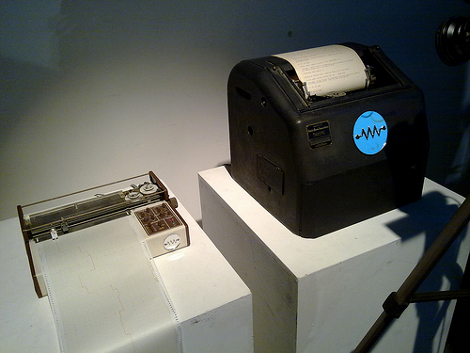
The folks from NYC Resistor got their hands on a teletype machine and hacked it to monitor Twitter. This eighty-year-old beast bangs out messages that it receives at 45.45 baud. This isn’t a project that turns something into a teletype, but rather finds a different way to feed the machine data. In this case, a python script parses Twitter and sends the data it finds to an Arduino board. The Arduino in turn formats the message into the serial format necessary to communicate with the device. To the left you can see a trend plotter, learn more about both in the video after the break.

















